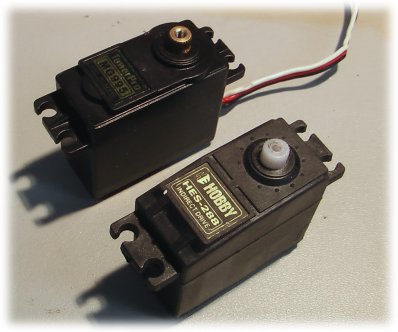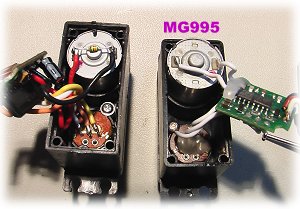Your Reviewer
My Credentials
So who's doing this reviewing then?

Well I've been building and flying or driving radio controlled models for over 40 years and during that time I like to think I've built up a reasonable amount of knowledge.
I'm also a qualified electronics engineer who has worked in radio frequency, analog, digital systems and software for more than three decades. In fact I designed and built my first RC set back in 1969.
For the past nine years I've also been involved in the design and manufacture of some rather sophisticated engine technology and UAV flight control systems.
So, chances are I've been there, done that and have a huge pile of tee shirts to prove it.
Right now I'm heavily into 3D flying and enjoy all aspects of the RC hobby. I may be old but I don't feel it.
In the Pipeline
Here's just a little bit of what's to come on this site...
RC explained: Demystifying terms such as PCM, PPM dual conversion, single conversion, full-range etc., this feature will explain it all.
Cheap Chinese Engines: Just how good are those cheap Chinese glow and gas engines that sell for half the price of their "brand-name" equivalent? I put several to the test.
Build your own radio gear?: Back in the old days, building your own RC gear was not uncommon and now the arrival of 2.4GHz has made it practical again.
Creating a digital servo
MAKING ONE GOOD SERVO OUT OF TWO NOT-SO-GOOD ONES

The TowerPro MG995 servo (see the MG995 review) is, from a precision and reliability perspective, one of the worst servos ever made.
The combination of badly mismatched electronics and mechanics has produced a servo with massive amounts of overshoot and oscillation around center - but all is not lost.
A while ago I found myself with two useless servos: a TowerPro MG995 and a Hitec HS425BB that had developed a fault in its electronics.
"I wonder..." I thought to myself. "Could I put the servo amplifier from the MG995 into the HS425 and make a half-decent digital "standard" servo out of these two useless units?
Well that's exactly what I did -- and two years later, that servo is still providing excellent service in the tail of a 40-sized 3D profile plane that gets a real hammering every weekend.
Now I'm very much aware that there are a lot of people who have bought MG995 servos and been so disgusted with their performance that they've simply tossed them in a box under the bench and forgotten about them. Well here's your chance to recover a little value from that purchase... now you can convert some of your cheap "standard" servos to digitals without spending another penny.
What You'll Need
In order to fit the guts of an MG995 into another standard-sized servo you're going to need the following:
- A soldering iron (25W or so)
- Some fine rosin-core solder
- Small screwdrivers
- Sidecutters for cutting/stripping wire
- A modest amount of dexterity and good eyesight
First thing to do is dismantle the MG995 an other servo (in this case an HES Super-Servo I bought from Radical RC a long time ago and which suffered from a dead servo-amp) by removing the four screws that hold the three sections of the cases together.

Pull the bottom section of the case free, this will expose the motor and the servo amplifier circuit-board.
Now remove the two screws that hold the small circular board to the feedback pots so that these can come away as shown in the picture below.

Note carefully the orientation of the wires that go to the motor. Most servos will have a red dot on one motor terminal or will have a red wire.
Now, on both servos, remove the small screw that holds the feedback potentiometer in place. A gentle pull will allow the feedback pot to come free and this will leave only the motor wires joining the amplifier to the servo.
Unsolder the motor wires from both servos and solder the wires from the MG995 amp to the motor in the other servo -- making sure you're soldering the positive wire to the positive motor terminal.
Now you can push the feedback pot back into the case -- note that it has a flat portion on the shaft and this must line up with the slot in the gear into which it fits.
The next step is to screw the pot back into place using the two screws that were removed earlier.
Now the amplifier from the MG995 can be positioned in the case as shown in this picture.

The bottom of the case can now be replaced.
Now, BEFORE you plug this new now-digital servo in and try it, remove the top portion of the case to expose the gears of both servos and count them.
If both servos have an even or odd number of gears then you can put the top back on but if one had an odd number and another has an even number you're going to have to go back and reverse the wires on the motor.
Why is that?
Well the odd or even number of gears determines which way the servo's output shaft turns in relation to the motor's direction of rotation. If the rotation is the wrong way then the servo will simply run to the end and stall because the amp will be driving the motor the wrong way to correct the output arm position.
If you're at all worried about this you can try testing the servo with one of the gears removed and make sure that it's going to turn the right way before you put the whole thing back together.
Once you're happy, screw it all back up and enjoy your new really cheap digital servo.
Note that you may still experience a little overshoot but since the motor and gears of most standard servos are a lot lighter than those in the MG995 mechanics, that overshoot will be far less severe and the servo will show much greater precision and accuracy.
And, with the cheapest digital servos (such as the Hitech HS5475) costing around US$35 each, the combination of the servo amp from a $10 MG995 servo and the mechanics of a low-cost $15 standard servo make for a much cheaper option. Plus, you'll have the satisfaction of having put it together your self.
If you found this information useful then please consider making a small donation towards the operation of this website.
Fresh Articles:
Join the Forums!
The Blog
Updated: 20 Sep 2012
Here's a blog that will keep you informed just what's going on behind
the scenes at RC Model Reviews and also tells you a little more about
myself.
How compatible are 2.4GHz RC systems?
23 Mar 2010
How come there's no compatibility between different brands of transmitters and receivers?
Why can't you use a cheap Chinese receiver with your Futaba FASST radio?
How to get a product reviewed here
4 Mar 2010
Since this has become a very frequently asked question, I've posted this
simple guide to getting your product, or a product you're thinking of
buying reviewed here at RCModelReviews
How servos work
Useful information on what's inside your servos and how they work.
The Good Oil
Important facts you should know about the oils that are used in our model engine fuels.
Heads-Up: 2.4GHz RC systems tested
How well do five different 2.4GHz systems stack up when hit by interference? The answers are here, with more to come.
Review: Bushnell's $80 Speed Gun
Yes it does work on model airplanes but there are some limitations involved with this bargain-basement radar speed gun.
Review: TowerPro MG995 servo
These are possibly the world's worst servos, find out exactly why you should avoid these boat-anchors at any cost.
Review: SK90

It's cheap but can it really stack up against other glow engines in the .90 market? Find out in this review.
Review: iMax 9X 2.4GHz radio
How does this cheap 9-channel 2.4GHz radio system perform when compared to big-name systems that can cost two or three times as much? Have the Chinese finally developed a real contender with the iMax 9X?
2.4GHz Explained
Does all this 2.4GHz stuff have your head spinning?

I've done my best to demystify the whole subject so if you feel like a bit of learning, this is the stuff for you!
Fix That Engine!
How can you tell when your engine needs new bearings? Who has the best prices and service on replacements? Just how do you change them? Get all that information and watch a great video tutorial anyone can follow.
Chinese Servos - How do they stack up?

The Chinese are now churning out a huge number of very reasonably priced no-name servos. But are they any good?
Baffled by batteries?
 Nicad, NiMH, Li-Ion, LiPoly, LiFePO4, A123... the range of different
battery types has never been greater. So how do they differ and
what type should you be using?
Nicad, NiMH, Li-Ion, LiPoly, LiFePO4, A123... the range of different
battery types has never been greater. So how do they differ and
what type should you be using?
Possibly useful:
